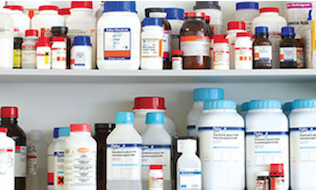
Employer-sponsored drug plan spending increased 2.5 per cent from 2016 to 2017, according to Express Scripts Canada’s latest drug trend report.
“The trend was fairly moderate in terms of the year-over-year increase that we saw,” says John Herbert, director of strategy, product development and clinical services at Express Scripts. “But there’s still cause for concern when we look at the number of high-cost drugs coming down the pipeline, including gene-based therapy.”
He points to Luxturna, a drug used to treat an inherited retinal disease causing blindness. “This is a very remarkable therapy that can actually cure blindness, but it comes at a cost of $850,000 for a single-dose treatment.”
Read: Encouraging better decisions by high-cost claimants the ‘greatest opportunity to capture savings’
Indeed, spending on specialty drugs now accounts for 31 per cent of total spending, up from 15 per cent in 2008, according to the report. While those drugs often grab the most attention, Herbert notes that one of the report’s more interesting findings is the spending is from a relatively small group of patients. About 20 per cent of claimants account for almost 80 per cent of the drug spending. Their average annual drug spending is 15 times that of other claimants.
“They tend to be using multiple medications to treat upwards of eight different chronic conditions at the same time, and they’re visiting several physicians,” he says. “They may be seeing a specialist as well as their GP.”
The report also highlighted the extent of non-adherence. Among the 20 per cent of claimants who account for 80 per cent of drug spending, half are non-adherent to one or more of their medications. That non-adherence arises across various conditions, including 57 per cent for those taking one or more oral cancer medications, 49 per cent for drugs to treat depression and 42 per cent for diabetes treatments.
Read: Panel explores solutions to boost adherence
Using diabetes as an example, Herbert notes that among people living with the disease, about 89 per cent are using other types of medications. “When we drilled down, we saw that they’re not adherent to these other ancillary conditions. That’s cause for concern because a diabetes patient shouldn’t just be adherent to their diabetes medication. They need to be adherent to other types of medication that are designed to reduce the risk of stroke, heart attack, kidney failure,” he says.
Non-adherence isn’t only damaging for the patient. “[Non-adherence] to high-cost specialty medication has two major impacts to the plan sponsor and plan member: increasing the drug spend and continued control issues of medical conditions,” says Karen Gleeson, a senior consultant at Eckler Ltd.
“The more the insurance companies can come up with strategies to help members with adherence would also help plan sponsors with the overall cost, plan members with their health and, hopefully, prevent a disability claim from occurring,” she says.
The report also found a high correlation between non-adherence and the number of medications an individual took. “We did truly see adherence begin to decline and slide as the number of co-morbidities and the number of medications increased,” says Herbert.
Read: Drug Plan Trends Report: Alarm about costs sparks ‘monumental shift’
While there’s no easy solution to the issues, there are a number of tools plan sponsors should consider, says Herbert. The approach, he continues, should be expansive, including formulary and utilization management (through tools such as prior authorization and step therapy) and preferred-pharmacy networks.
